Introduction
Every tree is treated divine in Sanatana Dharma. It is not because our ancestors were superstitious, but they were eco-conscious. The need of the hour is to understand, protect, and conserve nature. Because we live in a symbiotic environment where mutualism among species is one of the most essential concepts. The uniqueness of Sanatana Dharma is that it brings all beings and things within its spiritual embrace. The codes of conduct exist for the mutual well-being. It is here one shall be reminded of the popular prayer,
“Loka Samastha Sukino Bhavantu.”
“May all live peacefully.”
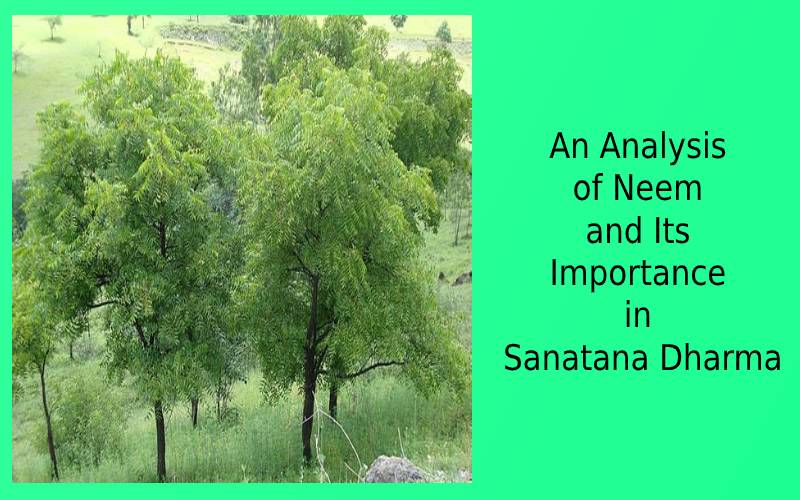
In the previous issues of the e-magazine, importance of various trees has been discussed. In this issue, we shall have a close look at the Margosa tree or the Neem tree. More than its medicinal and curative properties, it is considered sacred in various parts of India. Whenever one travels to any part of the district in Tamil Nadu, one can easily find out the tree tied up a sacred yellow cloth, Kumkum and turmeric applied in the upper or the middle portion of the trunk, and lamps lit in front of it. This shows the spiritual significance behind the tree. In fact, it is believed to be the manifestation of Goddess Parvathy herself in the form of ‘Maariamman’.
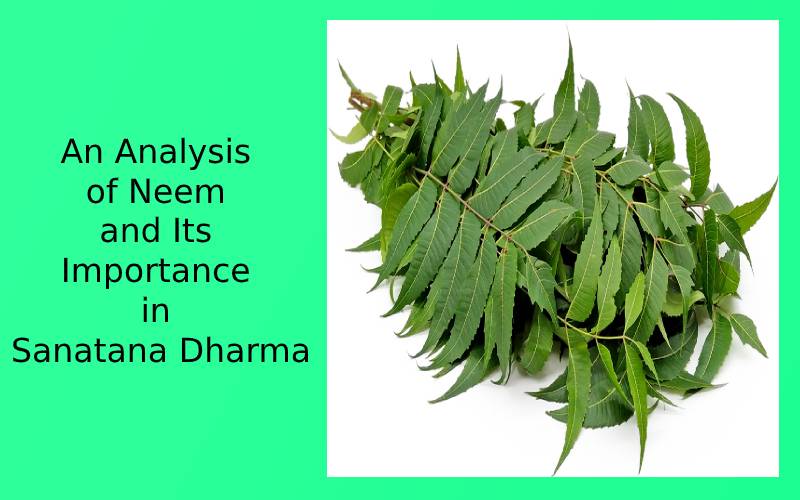
Story of Sri Nimbarka Dev
Let us investigate the mythological aspects and various interesting facts connected to the tree. There is a particular sect in India belonging to Vaishnavite community called ‘Nimbarka’. They worship the ‘Sun in the Neem tree’. According to Nimbarka Sampradaya, Lord Vishnu sent his Sudarshana Chakra to the earth, on the prayers of people tormented by darkness. The Chakra took the form of Sri Nimbarka Dev and was born Aruna Muni – Jayati Devi couple. They lived a simple hermit life and ate whatever they got for the day. One Lord Brahma disguised himself and came to their hut seeking alms. They could not deny the simple hermit without providing anything to eat. Asking the hermit to wait, Niyamananda, later day Sri Nimbarka Dev, went to forest for collecting fruits. By the time he had returned the last ray of Sun had set. As hermits don’t consume food after its sundown, Niyamananda prayed to Lord Vishnu who sent his Sudarashana Chakra which was resplendent like the Sun. He placed the chakra on a neem tree near his house. Until the hermit completed his meal, the sky looked like a day. Later the hermit revealed his real form and blessed the young Niyamanada who later became Sri Nimbarkacharya. 1
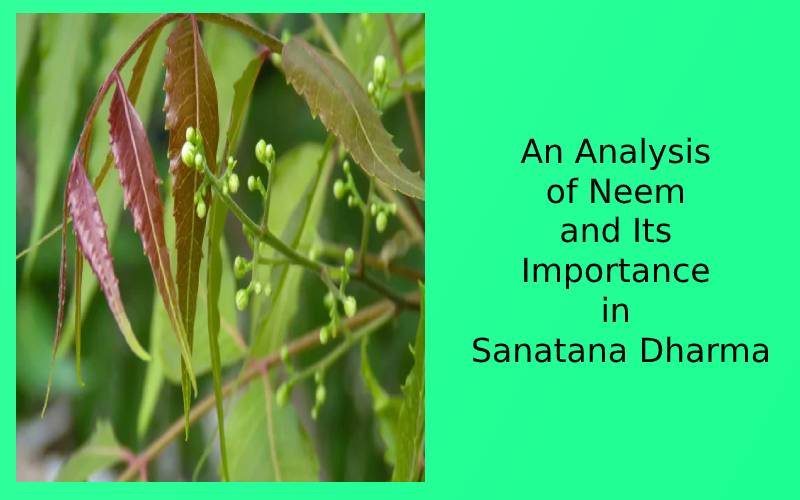
Mythological Connect
There are also various stories connected to ancient Indian history. It is said that when Garuda was carrying the Amritam from Paarkadal (Ocean of Milk) to the heavens, few drops fell on earth and formed into neem trees. In other story, it is said that Lord Indra himself sprinkled Amritam over earth which gave rise to neem trees and thereby bestowing immense goodness upon the people of earth. It is also said to be more beneficial than the Kalpaka Vrksha or the wish-yielding tree. In another instance neem tree is related to Dhanvantri (God of medicine). The ancient Hindus believed that planting neem trees ensured a passage to heaven.
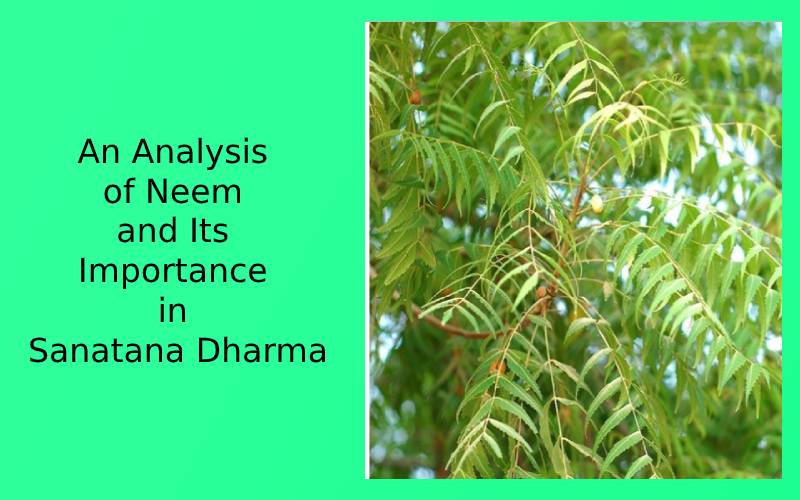
Medicinal Properties
Some interesting stories about the neem tree was compiled by Rev Osborn Martin in his book, ‘Gods of India’ in 1914. The neem tree in connection with the godlings of disease who are supposed to reside in it. It is believed to be occupied by Sitala (Seetalaa), the small-pox deity, and her six sisters in the North India and Maariamman in the South India. Hence during the rainy weather when epidemics prevail women bathe, dress themselves in clean clothes, and offer rice, sandalwood, flowers, and a burnt offering with incense at the foot of this tree. The neem is also connected with snake worship, as its leaves repel snakes.
The neem leaves are known throughout India to carry medicinal properties. The paste made out of the finely grounded neem leaves is used for wounds and sore because of its antiseptic property. Beating a person with neem leaves is said to drive away evil spirits which grips the person. It is a symbolic process of removing the negative vibrations from a person because of its high antioxidant property. When the neem leaves are crushed with turmeric and the paste is consumed, it is said to remove toxins from our body. Neem leaves are known for its antibacterial which is the reason why anyone can spot neem leaves in front of houses as a precaution from bacterial and viral diseases. They are considered extremely beneficial for skin ailments. Sometime people also use neem twigs as a brush which strengthens the gums. Smoke of the neem leaves is treated as the best, pollution-less, natural mosquito repellent.
In India, there is a common belief that chewing fresh leaves of neem daily purifies the blood and strengthens the defence mechanism of human body. They even say that one gets immunity from even snake poison and scorpion poison. The oil of the seeds is used as a medicinal hair oil and also for curing rheumatism and leprosy.
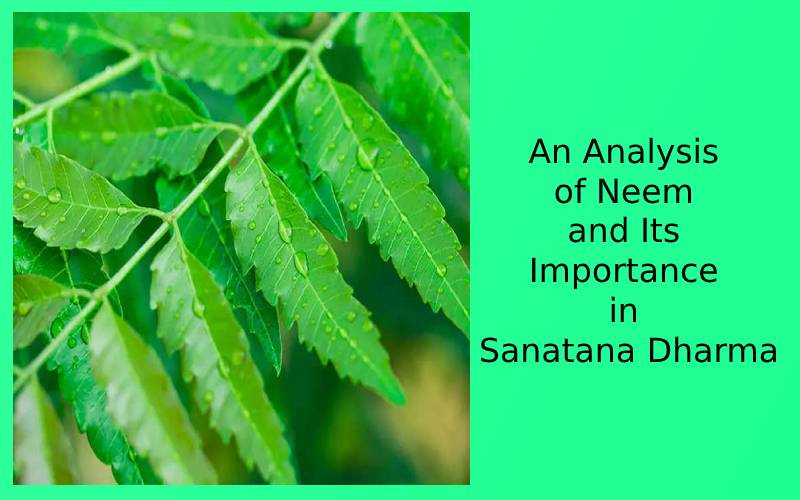
Usage in Festivals
In the State of Andhra Pradesh and Telangana, the ‘Telugu New Year’ or ‘Ugadi’ is celebrated with a special dish made of neem flowers and other ingredients. It is called ‘Ugadi Pachadi’. Tamil people use the flowers of neem in the Payasam (pudding) for the Tamil New Year Day. In various parts of India, neem tree is referred to as Neemari Devi. Reference to neem tree and its medicinal properties could be spotted in the world’s ancient medical texts, ‘Sushrutha Samhita’ and ‘Charaka Samhita’.
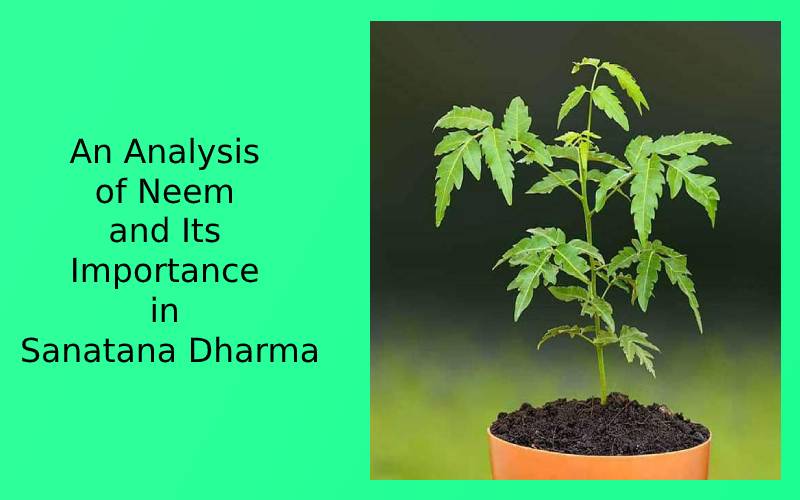
Evidence
Two major tragedies attracted the world attention towards neem. In 1958 there was a devastating locust attack in Nigeria that wiped out every tree in the area, leaving only the neem trees untouched. And the second was the Bhopal gas tragedy in 1984 which killed over 3000 people. But the neem trees were not affected. Some entomologists now conclude that neem has remarkable powers for controlling insects. These are some of the reasons why farmers use neem leaves, both tender and dried, as soft pesticides.
References:
1. http://www.sukcharkbashram.org/nimbarka-philosophy/
2. https://www.grow-trees.com/blog/uncategorized/trees-in-indian-mythology-and-spirituality/
3. https://tamilandvedas.com/tag/neem-tree/
4. Board of Science and Technology for International Development; National Research Council, ‘Neem: A Tree for Solving Global Problems’, The National Academies Press, 1992.
5. https://natureneem.com/en/wonders-of-neem/
NEXT ARTICLE
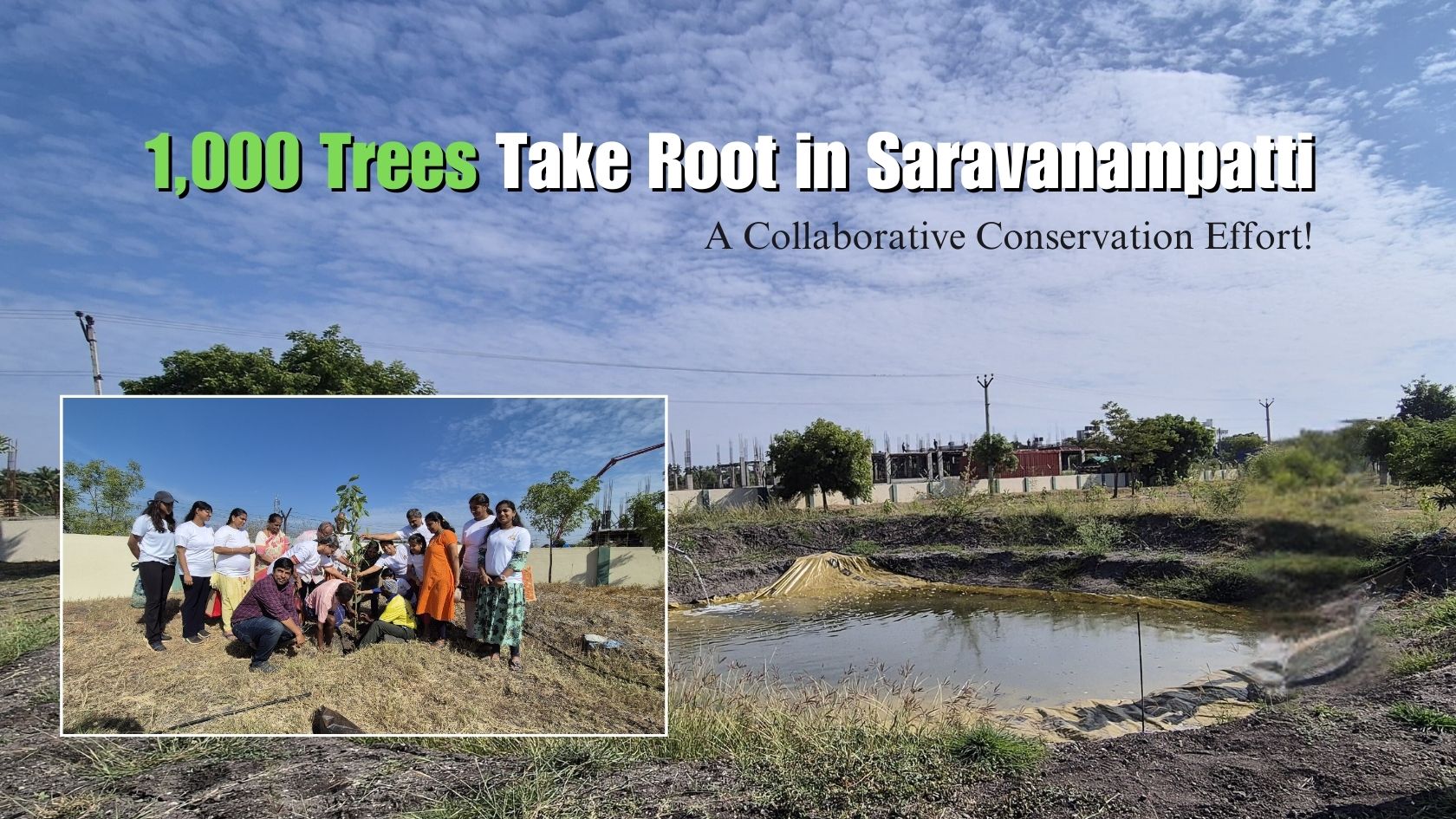
A group of eager volunteers and nature enthusiasts, gathered amidst the lush greenery, ready to embark on a mission to enhance the beauty of our surro...